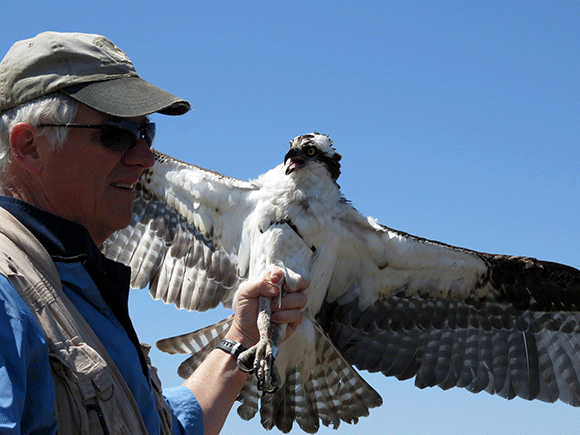
Staddler
 |
BioOn the 21st we headed down to the NH coastline--all 17 miles of it--with the ambitious hopes of deploying 2 transmitters. We worked the Hampton Beach marshes with the help of Dave Weber, who has set up a number of nesting platforms across the marsh. One of these includes the nest where we tagged a juvenile (Weber) back in 2013. We first checked Weber's nest. The female was incubating and there was a male off in the distance, which might or might not have been the male from that nest. We weren't sure, so we motored off to check out other options. The second nest we checked was just a house-keeping nest--well constructed, but no eggs. So we went on to plan C. The third nest we checked, close to the Seabrook Nuclear Power Plant, had a female incubating and a male in close attendance. When we landed near the nest, the female barely moved. We were almost underneath the nest before she even got up off of the eggs. As we set the noose carpet over the nest, the male showed up and was very aggressive, so we were pretty sure we'd catch him. The female was back on the nest and trapped within minutes of our backing away. Once we had the female in hand (she was a really big bird weighing almost 5 pounds (2.2 kg)), we did not have to wait long for the male to land on the noose carpet and get caught. Within 40 minutes he was released and flying out over the marshes with a new transmitter. The marshes at Hampton Beach were once harvested for salt-marsh hay. Scattered around the marsh are clusters of wooden stakes. These "staddles" were used to keep the bottom of a pile of hay off the ground so the hay wouldn't rot. They are great perches for Ospreys. Each Osprey pair we visited was using the nearest cluster of staddles as a perch. So we decided to name the newly tagged bird "Staddler." (It was a new word for me, too.) |
| image |
Map TitleText |